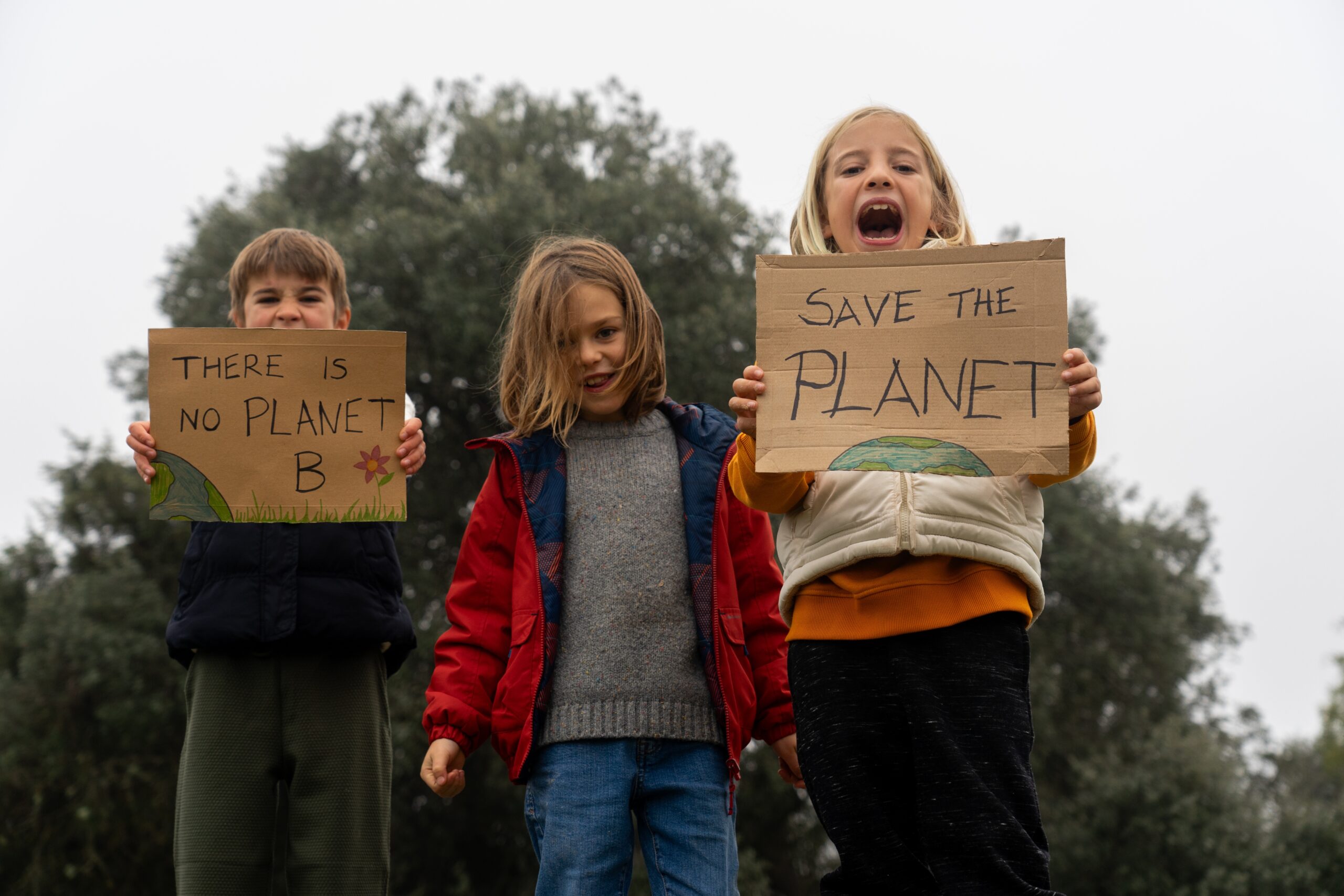Climate change and biodiversity loss are affecting the mental health of children and young people worldwide. Although many of us care deeply about ecological issues, they can seem less relevant to clinical practice and research.
In this blog, we briefly summarise the literature on climate change and youth mental health before considering how Child and Adolescent Mental Health professionals (CAMH) can play a vital role in both reducing the carbon costs of healthcare and strengthening population mental health.
This blog was written jointly with Shailpriya Nand, a medical student at Imperial College London who is passionate about Child and Adolescent Psychiatry. She shares some reflections on how we can work together to make our Child and Adolescent Mental Health Services (CAMHS) more resilient, sustainable and fit for the future.
Climate change and youth mental health: a global perspective
The direct and indirect climate change impacts on the mental health of children and young people has been mapped in a recent scoping review (Clemens, von Hirschhausen and Fegert, 2022). Extreme weather events such as floods, wildfires, and heat waves can directly lead to psychological distress, including anxiety, depression, and post-traumatic stress disorder (PTSD). Long-term exposure to environmental stressors like poor air quality and food insecurity increases the risk of developing mental health difficulties. Vulnerable groups, including those from disadvantaged backgrounds, are particularly at risk of being exposed to the adverse effects of climate change, facing compounded stressors that can hinder their mental, emotional and social development.
From anxiety to action
We know that young people feel increasingly anxious and helpless about climate change. In a 2021 global survey of 10 000 children, 59% self-reported that they were extremely worried about climate change (Hickman et al., 2021). What is hopeful is that a recent study by Dr Andrik Becht and colleagues(Becht et al., 2024) suggested that supporting adolescents to engage with pro-environmental behaviours in the public sphere, such as activism, can be protective.
The window of opportunity for the global community to act to mitigate the worst impacts of climate change is closing, which is why this year’s 29th Conference of the Parties (COP29), convened by the United Nations Framework Convention on Climate Change, is more important than ever.
Before COP29, the Conference of Youth takes place, which engages young people worldwide in influencing policy, capacity building and cultural exchange. Their inspiring work is showcased in a Young and Future Generations Day, with sessions organised by children and young people. Young people have led and brought to light the intergenerational injustice of inadequate action now on future generations (Young and Future Generations Day at COP24).
It is more important than ever for CAMH professionals to join our voices to young people’s voices globally. We all need to ask governments to honour the goals set in the 2015 Paris Agreement to keep the global mean temperature rise below 1.5 degrees from preindustrial temperatures.

“In a 2021 global survey of 10,000 children, 59% self-reported that they were extremely worried about climate change.”
New opportunities to promote health through combatting climate change
The 2024 Lancet Countdown report on health and climate change highlighted the accelerating “record-breaking threats to… wellbeing, health, and survival from the rapidly changing climate”. It also emphasised that action on climate change leads to new opportunities to “deliver a healthy future for all” (Romanello et al., no date).
Such opportunities include:
- Asking governments to put health at the centre of national commitments
- Shape societies to promote health, equity and climate justice
- Build future-proofed health systems
- Tackle climate change through public health interventions
What does this mean for a child and adolescent mental health professional?
Whilst it is sometimes hard to maintain the capacity to engage with global action, there are many opportunities for CAMH professionals to make a difference in our own clinical practice, local teams and health systems.
Healthcare systems, including CAMHS, are carbon intensive and have a key role in leading the way to becoming more sustainable.
This should be a win-win as, at its core, good quality mental health practice is often the most sustainable (Monsell et al, 2021). However, we know that systems are often overwhelmed and fragmented; therefore, more capacity and guidance may be required to make the investments needed.
In 2023, the Royal College of Psychiatrists, supported by NHS England, was commissioned to complete a report identifying evidence and educational resources to deliver greener, more sustainable, net-zero mental healthcare. This followed the NHS in England becoming the first health care system in the world to commit to reaching Net Zero by 2040 on the 1st of July 2022 (NHS England).
The report made a series of essential actions which was underpinned by the following principles of low-carbon care:
- Keeping people healthy
- Right care, right place, right time
- Lower carbon treatment and care settings
- Clinical leadership, systems and workforce

“Whilst it is sometimes hard to maintain the capacity to engage with global action, there are many opportunities for child and adolescent mental health professionals to make a difference in our own clinical practice, local teams and health systems.”
Working together for high-quality sustainable Child and Adolescent Mental Health Services
After reading through the Net Zero Mental Health report, Shailpriya felt the following ideas based on the report recommendations were most important for CAMHS.
- Prioritising prevention and addressing the social determinants for the whole family, such as employment, poverty, housing and diet.
- Make every contact count so that key problems are addressed early, if possible, to prevent mental health problems from worsening.
- Funding primary and community services to minimise hospital admissions due to mental health/physical crises in young people
- Promoting and collaborating with other community services that help to prevent or mitigate mental health issues and involving feedback from council leaders and other community leaders to improve the quality and sustainability of services for a particular locality
- Involving the whole multidisciplinary team in treatment plans and supporting the whole team in establishing sustainable care plans for young people
- Fostering an open and learning culture where new advancements in sustainable health care can be implemented
A key area for CAMHS is to find appropriate alternative solutions in the community for young people needing inpatient care, as inpatient admissions are often the most disruptive and distressing experiences for young people and their families and a carbon-intensive intervention. This often relies on closer partnerships between healthcare, social care and education providers alongside greater access to community support for young people and their families.
Examples of such projects already exist. The Net Zero Mental Health Report showcases a collaboration between Somerset Integrated Care System and The Space, a nature-based community well-being intervention. The initial evaluation demonstrated that increasing access to both group and individual therapeutic sessions in the community reduced subsequent emergency department attendances.
What does it mean for future doctors?
Medical school training has gradually introduced teaching on sustainable healthcare in the U.K, however more work is needed to fully integrate climate change and sustainability into the undergraduate and postgraduate medical curricula globally, to enable us to serve our patients holistically whilst ensuring the health of our planet.
Conclusion
Although there is now an increasingly narrow window for governments to act on climate change, CAMH professionals have an important role leading clinical practice and research to integrate mental health support with climate resilience to protect the well-being of children and young people.
References
- Romanello, M. et al. (no date) ‘The 2024 report of the Lancet Countdown on health and climate change: facing record-breaking threats from delayed action’, The Lancet [Preprint]. Available at: https://doi.org/10.1016/S0140-6736(24)01822-1.
- National Collaborating Centre for Mental Health. Delivering greener, more sustainable and net zero mental health care: Guidance and recommendations. London: National Collaborating Centre for Mental Health; 2023. Available at: https://www.rcpsych.ac.uk/improving-care/net-zero-mental-health-care-guidance-education
- Clemens, V., von Hirschhausen, E. and Fegert, J.M. (2022) ‘Report of the intergovernmental panel on climate change: implications for the mental health policy of children and adolescents in Europe—a scoping review’, European Child & Adolescent Psychiatry, 31(5), pp. 701–713. Available at: https://doi.org/10.1007/s00787-020-01615-3.
- Becht, A. et al. (2024) ‘Feeling anxious and being engaged in a warming world: climate anxiety and adolescents’ pro-environmental behavior’, Journal of Child Psychology and Psychiatry, 65(10), pp. 1270–1282. Available at: https://doi.org/10.1111/jcpp.14035.
- Hickman, C. et al. (2021) ‘Climate anxiety in children and young people and their beliefs about government responses to climate change: a global survey’, The Lancet Planetary Health, 5(12), pp. e863–e873. Available at: https://doi.org/10.1016/S2542-5196(21)00278-3.
- Programme for Youth and Future Generations Day at COP24. UNFCC website. Last Accessed 04/11/2024
- https://unfccc.int/topics/education-youth/youth/youth-in-conferences/young-and-future-generations-day-at-cops/young-and-future-generations-day-at-cop-24
- Greener NHS. NHS England Website. Last Accessed 04/11/2024 https://www.england.nhs.uk/greenernhs/a-net-zero-nhs/
Conflict of interest
Dr. Shuo Zhang is on the Planetary Health and Sustainability Committee of the Royal College of Psychiatrists. She was on the Expert Reference Group which contributed to the Net Zero Mental Health Report and subsequent learning resources.
Authors

Dr. Shuo Zhang is a child and adolescent psychiatry higher trainee in Northwest London. She is currently out of programme to pursue a Wellcome Trust funded PhD on inequalities in access and outcomes whilst young people are waiting for child and adolescent mental health services at King’s College London.

Shailpriya Nand is a 5th year medical student at Imperial College London with an interest in Child and adolescent psychiatry and the role of preventative and lifestyle medicine in enhancing healthcare. She is a RCPsych PsychStar Fellow for 2024/2025.


